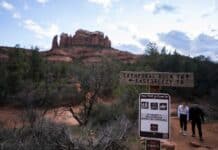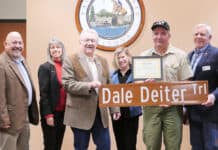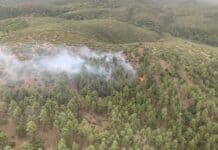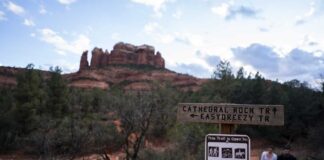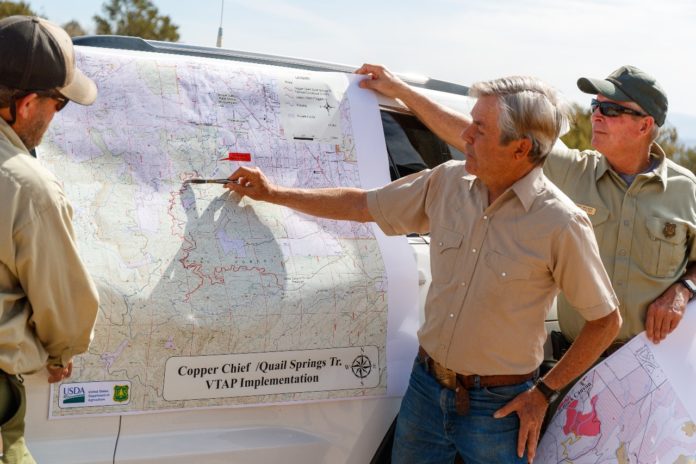
On Thursday, April 1, Todd Willard, district ranger for the Verde Ranger District of Prescott National Forest, convened a meeting with local bowhunters and members of the Verde Valley Cyclists Coalition at the Blowout Wash Trailhead at the base of Mingus Mountain.
On the agenda: Mule deer habitat along the planned Copper Chief Trail.
The meeting was spurred by a letter sent by the Rim Country Bowhunters Association to Prescott National Forest and other backers of the Verde Trails Access Plan in March. The VTAP, approved in 2018, is creating a non-motorized trail system along Mingus Mountain that connects communities and existing trails to create greater outdoor recreation opportunities.
In the letter, the bowhunters said that recent flagging laying out the next phase of trail building, the 7-mile Copper Chief Trail, appeared to be going through prime deer habitat, including “traditional bedding and feeding grounds where these deer live and use daily.” The letter asked Prescott National Forest to consider rerouting the trail to avoid the habitat.
Senior RCBA member Curt Lindner said that members of the bowhunters group were concerned that trail traffic would push the herd of approximately 60 mule deer in the area away from the bedding and feeding area, putting stress on the herd, which could lead to reduced numbers.
“We watch those deer all the time,” Lindner said. “The welfare of the deer is a big deal for us.”
He said the group was not part of the comment process when the plan was going though a National Environmental Policy Act study years ago, apparently missing the call for comment.
Willard said that PNF can make small changes to the trail’s alignment, but major changes were not in the cards because the route had already been studied for environment impact and was approved.
Willard also made the case that the forest is mindful of wildlife habit when laying out the exact alignment of a recreation trail, giving the example of avoiding water sources to minimize disturbance to animals.
That point seemed proved when Lindner and forest officials realized while looking at a map that the actual alignment appeared to already avoid one of the areas of greatest concern for the bowhunters, a hillside with prime deer habitat close to Blowout Wash Trailhead.
Arizona Game & Fish Wildlife Manager Tom Bagley also told the group that in his experience, deer are adaptable to new trails and wouldn’t be pushed out of the area by the non-motorized trail.
For PNF trails specialist Jason Williams, this was especially likely for the Copper Chief Trail, which he predicted would be a low volume trail during the next decade.
“It is brutally rugged in there,” Williams said of the elevated area the trail will run through.
To address the bowhunters’ concerns, Willard said the forest could also consider adding habit enhancements in the area like wildlife water stations, to counter any stress the new trail adds.
Some sections of the new trails have not been flagged yet, and Lindner said his group planned to give input on the final alignments.




